Hoi An Silk Village is a traditional craft village with a history of nearly 300 years, located in the heart of the Ancient Town. In this place, the traditional beauty has not only been preserved but has also developed to reach a global scale. Let’s explore Hoi An Silk Village with VnCarRentals.com right now!
Table of Contents
Information about Hoi An Silk Village
Overview of Hoi An Silk Village
- Address: 28 Nguyen Tat Thanh, Hoi An City, Quang Nam Province, approximately 1 km from Hoi An Ancient Town.
- Opening hours: 8:00 AM – 9:00 PM
- Website: www.hoiansilkvillage.com
- Phone: (+84) 02353 921 144
- Admission ticket to Hoi An Silk Village: 50,000 VND/person,
- Buffet price at Hoi An Silk Village: 299,000 VND/person.
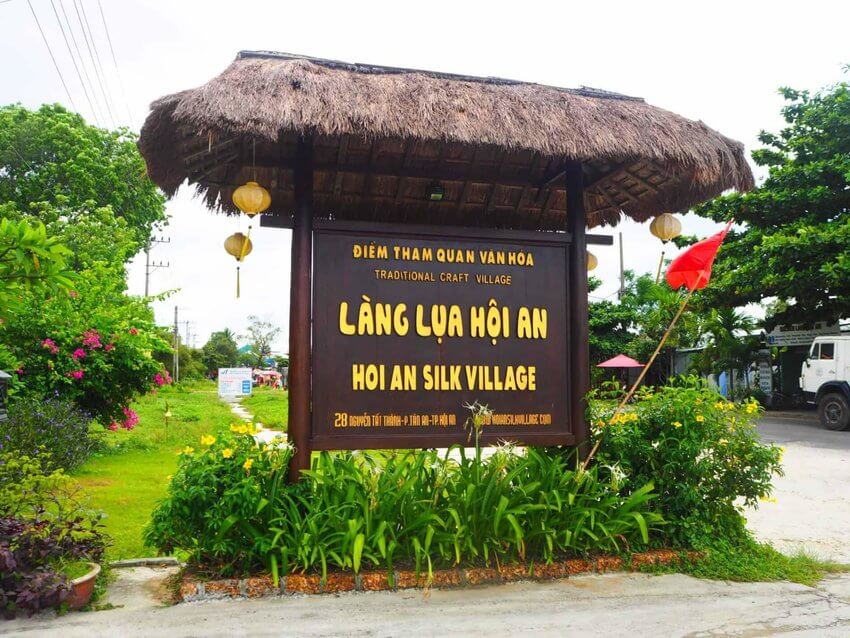
Currently, to expand tourism and meet the needs of visitors, Hoi An Silk Village offers guided tours: short tours and long tours.
Short tour (8:00 AM – 5:00 PM): ticket price 100,000 VND/person, tour duration is 45 minutes with a guide. Due to the short duration, you can only get an overview of the silk weaving process, and you won’t have the opportunity to experience the weaving process yourself.
Long tour (9:00 AM or 2:00 PM): ticket price 595,000 VND/person, tour duration is 4 hours, with a informative guide. With a longer duration, you will have a more in-depth understanding of Hoi An Silk Village. You also have the opportunity to personally experience silk weaving under the guidance of the local artisans.
When is the best time to visit Hoi An Silk Village?
Hoi An, in general, and Hoi An Silk Village, in particular, are beautiful in the summer and autumn months, from February to August, with cool weather and little rain. March and April are the best months as they are not in the peak tourist season, suitable for a comfortable sightseeing experience. October and November are rainy months, and there may be storms, affecting your journey. You can visit in the morning or afternoon as most of the attractions are indoors. If you want to enjoy traditional dishes in Hoi An Silk Village, it’s recommended to visit around noon or in the evening.
Guide on How to Get to Hoi An Silk Village
By Air
You can fly to Da Nang and then proceed to Hoi An. Flights from Ho Chi Minh City, Hanoi, or other provinces, as well as from other countries, to Da Nang, have ticket prices ranging from 400,000 to 1,600,000 VND/one way and take about 1 hour. From Da Nang Airport, the most common means of transportation to Hoi An and Silk Village are taxis or private cars.
- Taxi: This is a very popular mode of transportation. Taxis are readily available at the airport, and the journey takes 45-55 minutes to Hoi An. A taxi ride costs 350,000 – 450,000 VND, depending on the type of vehicle.
- Private car: This is the most convenient option for international travelers who may find it challenging to navigate public transportation in Vietnam. With the private car rental service in Da Nang from VnCarRentals.com, our driver will pick you up with a personalized sign at the airport, ensuring a safe and comfortable journey to Hoi An. Book a car rental service from Da Nang to Hoi An today to explore Hoi An Silk Village thoroughly.
- Bus: This mode of transportation is suitable for budget-conscious travelers or those who enjoy sightseeing along the way. You can take bus number 1 (from the central bus station in Da Nang to the bus station in Hoi An) with a fare of only 25,000 VND/one way.
By Train
If traveling by train, you will arrive at Da Nang Station or Tra Kieu Station. The travel time from Ho Chi Minh City or Hanoi to Da Nang takes 15-20 hours, with ticket prices ranging from 230,000 to 2,224,000 VND, depending on the itinerary and seat type. Afterward, you can choose a taxi or bus to get to Hoi An and visit the Silk Village.
By Intercity Bus
If you prefer to go directly to Hoi An without stopping in Da Nang, there are direct bus routes from Ho Chi Minh City to Hoi An or from Hanoi to Hoi An. Consider popular bus companies such as Thien An, The Sinh Tourist, Hanh Cafe, etc. Ticket prices range from 320,000 to 480,000 VND/one way.
By Motorbike
From Da Nang, you can drive a motorbike to Hoi An to save costs. There are two main routes:
- Follow National Highway 1 southward, then turn into Vinh Dien. This route allows you to visit the Cham Tower in Bang Anh.
- Cross the Han River Bridge, following the provincial road from Da Nang to Hoi An. This route is convenient for those who want to combine a visit to the Marble Mountains.
Learning about the History of Hoi An Silk Village Over 300 Years
The silk industry in the land of Đàng Trong (Central Vietnam) flourished during the 16th to 17th centuries. This period laid the foundation for the development of the weaving craft in Hoi An. The processes of mulberry cultivation, silkworm breeding, cocoon harvesting, and manual silk weaving were expanded and became highly specialized.
Merchants from both Eastern and Western countries eagerly sought out the port town of Hoi An to purchase various types of silk and raw silk. This contributed to establishing Hoi An’s port as a crucial link in the “Silk Road on the Sea” during that time.
To this day, Hoi An Silk Village still preserves ancient looms, and they are even operational, producing high-quality silk fabrics. The village continues to create delicate silk textiles using quality silk threads.
Since then, the village has been invested in and restored with the goal of revitalizing, maintaining, and developing the silk weaving craft of Quang Nam province. Simultaneously, it has transformed into a place for visitors to authentically experience the craft village environment, from the process of silkworm cultivation to the final product weaving.
Exploring Activities in Hoi An Silk Village
Explore the Ancient Space of Traditional Hoi An Houses
When visiting Hoi An Silk Village, you will marvel at the ancient houses of the people of old Hoi An, dating back to the 19th century. In the main large house, there is a place of worship for Lady Tham Tang, also known as Queen Doan Quy Phi. She played a significant role in preserving and developing the silk weaving craft, introducing it from Hoi An to the world. Besides, the traditional houses display characteristic silk products of 54 Vietnamese ethnic groups.
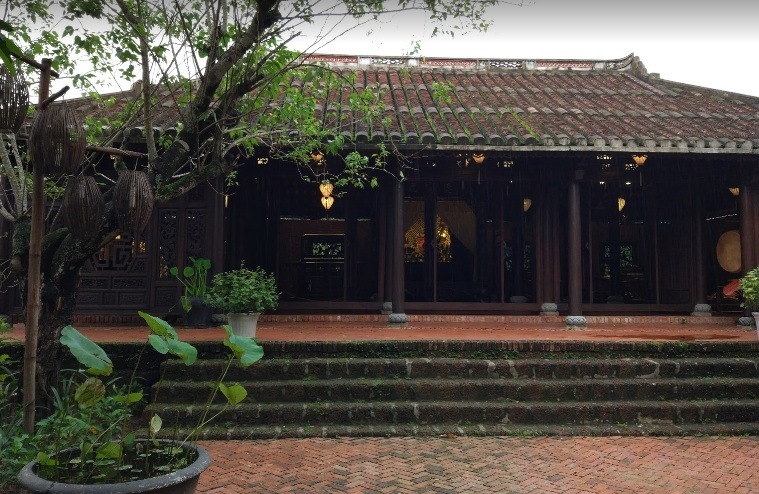
Admire the Collection of Ao Dai and Traditional Costumes of 54 Vietnamese Ethnic Groups
The traditional Hoi An Silk Village currently showcases over 100 elegant Ao Dai sets worn by Vietnamese women, reflecting the development over 3000 years of history. The traditional costumes of 54 ethnic groups vividly portray the country’s cultural diversity. This exhibition space leaves a strong impression on both domestic and international visitors.
Visit Mulberry Gardens with Ancient Mulberry Trees
You will explore vast mulberry gardens with centuries-old mulberry trees collected and planted from various places in the Hoi An Silk Village. These include mulberry varieties from Vietnamese people and ancient Champa mulberry varieties.
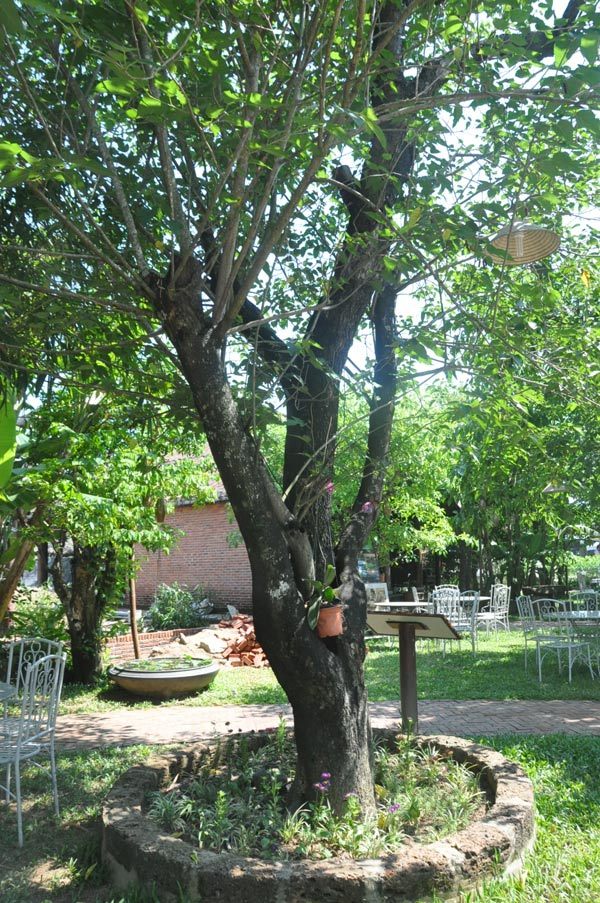
Discover the Silkworm Rearing Process
Visiting Hoi An Silk Village, you will learn about raising and caring for silkworms from their infancy to maturity. This involves harvesting leaves for the silkworms to eat until they are large enough, at which point they are separated for the silkworms to self-wrap in cocoons, ready for harvesting.
Explore the Silk Cocoon Incubation Room
After harvesting, the silkworm cocoons go through the incubation process. There are two colors of cocoons, yellow and white, resulting in two different silk colors. Initially, the harvested cocoons are continuously boiled in water at 80 degrees to produce soft and resilient silk threads. The large silk threads are formed by many small cocoon threads. This stage requires highly skilled techniques and patience, as only with proper incubation can high-quality silk be woven, commanding high prices.
Visit the Silk Weaving Room
After pulling the silk threads, they are boiled at a specific temperature and time (depending on the quality of silk the artisan wants to produce to adjust the boiling time). After boiling, the silk threads are attached to frames, and the silk weaving process begins. Here, you will witness firsthand the process of creating beautiful silk fabrics with intricate patterns and world-class quality. All weaving frames from ancient Champa times to modern times are displayed in Hoi An Silk Village for visitors to observe.
Explore the Display Room of Silk Products
Finally, you will be taken to the exhibition room displaying the products you just witnessed being woven. You will also learn how to distinguish silk woven from ancient weaving frames and modern weaving frames, different types of silk with long and short boiling times, genuine silk, and blended silk – all guided by professional artisans.
Accommodation at Hoi An Silk Village
Hoi An Silk Village not only offers interesting craft village tours but also provides ideal accommodation for guests. Silk Village Resort & Spa Hoi An is an ideal stop if you prefer a quiet place, close to nature, combined with sightseeing and relaxation. In addition, services such as spa, massage, a large swimming pool, and recreational spaces will make your stay enjoyable.
Tourist Attractions near Hoi An Ancient Town and Hoi An Silk Village
While visiting Hoi An Ancient Town and the enchanting Hoi An Silk Village, travelers have the opportunity to venture into other captivating destinations within close proximity. These additional attractions add depth and diversity to the overall travel experience:
- Thanh Ha Pottery Village – Located just 3.2 kilometers away, Thanh Ha Pottery Village is a haven for those interested in traditional Vietnamese pottery. Here, visitors can witness skilled artisans crafting intricate clay pottery using age-old techniques. The village’s rich history and vibrant atmosphere provide a unique glimpse into the artistry and craftsmanship of Vietnamese pottery.
- Kim Bong Carpentry Village – A mere 5.3 kilometers from Hoi An, Kim Bong Carpentry Village beckons with its timeless craftsmanship. This village is renowned for its skilled carpenters who create exquisite wooden products, from intricately carved furniture to traditional wooden boats. Exploring Kim Bong offers a chance to appreciate the meticulous workmanship that has been passed down through generations.
- Tra Que Vegetable Village – Situated just 3.2 kilometers away, Tra Que Vegetable Village offers a delightful escape into the world of organic farming. Visitors can meander through lush green fields, observe farmers cultivating a diverse range of vegetables, and even participate in traditional farming activities. The village’s commitment to sustainable, organic practices adds an eco-friendly dimension to the cultural experience.
- Banh Thach Mat Weaving Village – Nestled 8.8 kilometers from Hoi An, Banh Thach Mat Weaving Village invites travelers to discover the art of mat weaving. Skilled artisans create intricate woven mats using local materials, showcasing the village’s dedication to preserving traditional weaving techniques. Visitors can witness the meticulous process and even acquire intricately crafted mats as souvenirs.
- Phuoc Kieu Bronze Casting Village – Located 7.7 kilometers away, Phuoc Kieu Bronze Casting Village is a cultural gem known for its bronze casting heritage. Artisans here skillfully craft bronze sculptures, bells, and other ornate items using traditional casting methods. Exploring Phuoc Kieu provides insights into the historical significance and artistic mastery of Vietnamese bronze casting.
Notes when visiting Hoi An Silk Village
- The people of Hoi An Silk Village are generally approachable, friendly, and hospitable. Therefore, when visiting, you should pay attention to a few basic things to maintain the inherent beauty of this Ancient Town.
- Keep the purchased ticket to enter the silk village at any time.
- When visiting, dress appropriately and in accordance with Vietnamese customs. Avoid pushing, shoving, or speaking loudly in crowded areas.
- The people of Hoi An also have their own taboos and restrictions. If you are the first customer at a particular stall, it is advisable to buy something, even if it’s small, and negotiate the price beforehand to avoid being overcharged.
- To avoid being pressured to buy or being lured into deals, do not follow such invitations. Seek advice from the tour guide or those who have experience traveling to Hoi An.
Hoi An Silk Village leaves a profound impression on people due to its rich traditional values. The refined beauty of culture here is not only preserved and conserved but is also continuously flourishing as it follows the footsteps of travelers, spreading far and wide, and enduring alongside Hoi An’s streets. Let’s explore these aspects together with VnCarRentals.com as you embark on a journey to discover Hoi An!


